#canton tower
Text


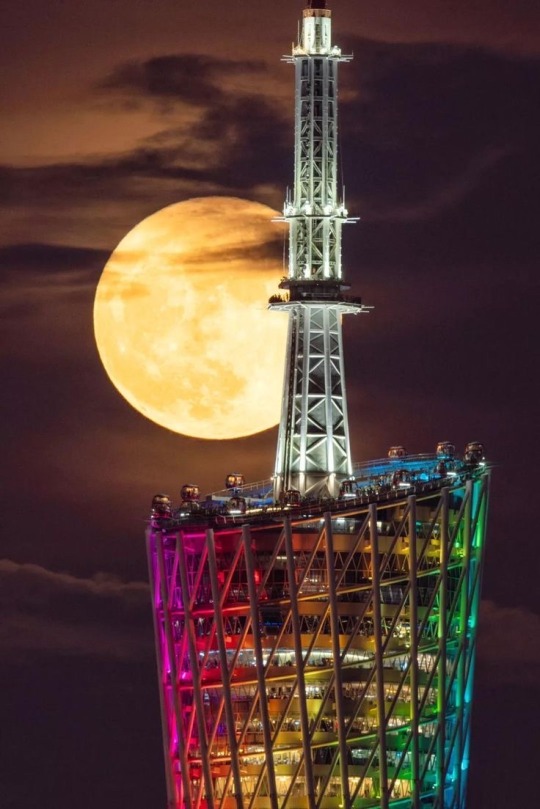
Canton tower, Guangzhou, China.
618 meters (1400 feet) tall, making it the tallest tower in China and the second tallest in the world.
0 notes
Text


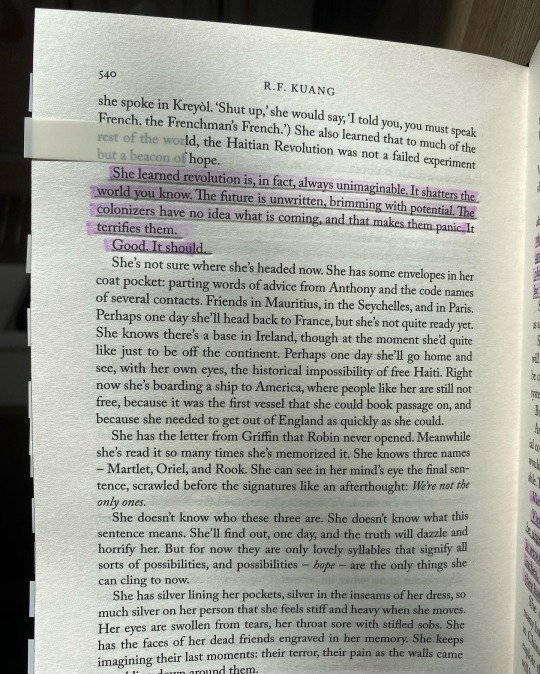
my favourite babel passages: last part
#babel#r.f. kuang#bookstagram#book reviews#book#reading#booklr#book worm#bookblr#uk#dark academia#dark acadamia aesthetic#oxford university#tower of babel#robin swift#canton#translation#an act of translation is always an act of betrayal
19 notes
·
View notes
Photo

天字碼頭 Tianzi Wharf #guangzhou #广州 于清雍正年间(1723年-1735年)形成,天字碼頭在清代時是專為迎送官員而設,是目前廣州使用歷史最久的碼頭。附近的接官亭(現在是北京南路的一條巷)正是當時迎接官員的地點。1839年林则徐到广东禁烟在此上岸,孙中山也曾在此坐船逃往香港。 During the years of Qing Emperor Yongzheng (1723-1735), Tianzi Wharf was reserved for the use of officials. In 1839, Lin Zexu used the wharf as a primary location for the destruction of British Opium. In addition, Sun Yat-sen took a ferry from this port during his escape to Hong Kong. #wharf #traveladdict #discoverchina #instachina #chinatravel #tower #ferry #port #canton #cantonese #guangzhoulife #streetphoto #streetphotography #light #squidgame #zonestreet #street2inspire #architecture #visitguangzhou (at Guangzhou, China) https://www.instagram.com/p/Cdvn44wumJH/?igshid=NGJjMDIxMWI=
#guangzhou#广州#wharf#traveladdict#discoverchina#instachina#chinatravel#tower#ferry#port#canton#cantonese#guangzhoulife#streetphoto#streetphotography#light#squidgame#zonestreet#street2inspire#architecture#visitguangzhou
0 notes
Note
fave cadw site(s)?
What a SPECTACULAR ask omg okay
In no particular order:
Caerleon Roman Fortress. Local to where I grew up, so a special place in my heart anyway given that I've been there so often, but it's also incredibly well preserved and presented given that the modern town of Caerleon is on top. Plus, the mythical seat of King Arthur, so that's fun. My sister and I spent a lot of time pretending to be lions in the amphitheatre and mauling each other
Caerwent. Similar reasons! Less local, but I did Classics as a teen and it's an excellent Roman town ruin for a school trip, PLUS it was the cantonal capital of the Silures - the Celtic tribe that lived in my region
Bryn Celli Ddu. Iron Age burial mound on Anglesey. Every time I've been I've bored the tits off of whoever I've been there with explaining the site, which just goes to show I need better friends
Caernarfon Castle and Town Walls. This is technically two sites but fuck it. I absolutely adore Caernarfon. I am politically not supposed to because Gogs, but it's just wonderful. You should all go. Borrow my car.
Castell Coch. Local again, I've been loads, but it's batshit. Built by a rich lunatic who looked around Wales, the Castle Capitol of Europe, and went "Where are the fairytale turrets" because he profoundly didn't understand the function of a castle. He also built the Animal Wall in Bute Park in Cardiff
Tretower Court, I've only been once but it was GREAT
Caerphilly Castle. Second biggest in Europe! Leaning tower! Fab.
277 notes
·
View notes
Text
꧁༺ Nikki’s Diary ༻꧂

꧁༺ Nikki’s Diary ༻꧂
When the lights on both sides of the strait light up slowly, let's go ride the Ferris wheel on the Canton Tower.


เมื่อแสงไฟทั้งสองด้านของช่องแคบค่อยๆ สว่างขึ้น ขึ้นชิงช้าสวรรค์บน Canton Tower กันเถอะ
[ 03.08.2023 ]

#Nikki’s Diary#Nikki’s Weekend#Nikki’s Diary 2023#Nikki’s Weekend 2023#Shining Nikki#Nikki 3D#Orangecatty#3D Dress-Up Game#Nikki Diary Thailand#08.2023
16 notes
·
View notes
Note
Hi RBS
I know you don’t take brands related stuff seriously.
Kai Xiao Zao celebrated the 4th anniversary of XZ’s brand collaboration with a rainbow colored building. I find it’s very special. What do you think??

I think the Canton tower is always rainbow colored. 😊
Sometimes things that people attribute to a cause, aren't caused by that at all. It's cute (and fitting) to see GG's name lit up with rainbow lights behind it, but it has nothing to do with GG or KXZ. It's just the way the tower is always (or usually, anyway) lit up.
20 notes
·
View notes
Photo








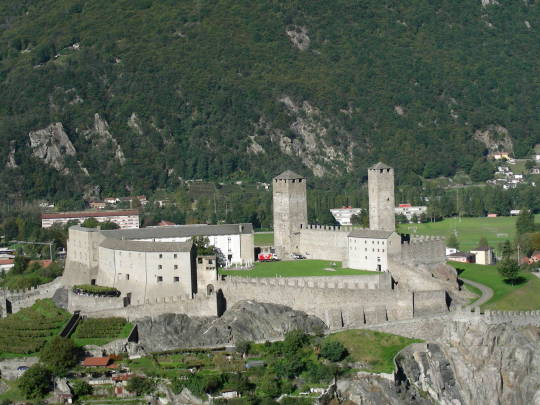
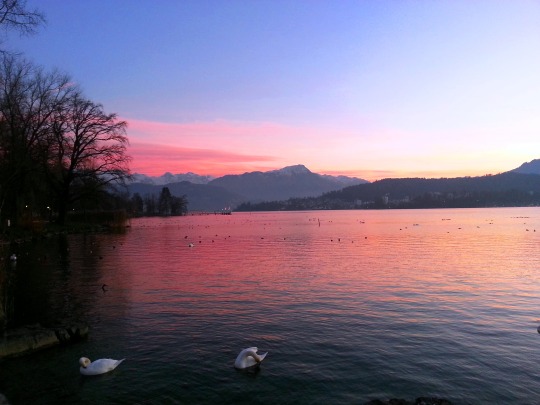
The Old Swiss Confederacy was formed with the signature of the Federal Charter on August 1, 1291.
Swiss National Day
Swiss National Day, celebrated on August 1, is the country’s national holiday. Although the Swiss Confederacy was founded on this date in 1891 and has been celebrated annually since 1899, it has only been an official holiday since 1994. Switzerland is a mountainous Central European country boasting several surreal lakes, villages, and the majestic Alps peaks. Its cities have medieval quarters and landmarks, such as the Zytglogge clock tower in Bern and the wooden chapel bridge in Lucerne. Furthermore, the country is renowned for its excellent ski resorts and adventurous hiking trails. Banking is an important industry, and Swiss watches and chocolate are well known around the globe.
History of Switzerland National Day
Every year on August 1, there are bonfires, paper lantern parades, fireworks, and Swiss flags swaying in the breeze. Swiss National Day was first established in 1891, yet it took more than a century for the hardworking Swiss to decide to hold a vote and give themselves the day off.
Switzerland is a mountainous landlocked country in South-Central Europe bordered by Austria, France, Germany, Italy, and Liechtenstein. With a geographic area of 41,285 square kilometers, the country is slightly smaller than the Netherlands and nearly twice the size of New Jersey in the United States.
Switzerland has fewer than 8.7 million people; the capital city is Bern, and the largest city is Zürich. German, French, Italian, and Rumantsch are the languages spoken in the country’s several regions, called cantons. According to the World Happiness Report 2021, the Swiss Confederation is the third-happiest nation on the planet, trailing only Finland and Denmark.
Geographically, the country is divided into three primary regions: the Swiss Alps in the south, the Alps in the north, and the Alps in the east. The Alps fade into the Swiss Plateau, which has a panorama of rolling hills, plains, and huge lakes. The Jura, a sub-alpine mountain range, lies to the northwest along the French/Swiss border.
Almost the entire country is a vacation destination. Switzerland features exquisite scenery with snow-capped mountains and ice-cold mountain lakes, melting glaciers, and mountain pastures that are ideal for downhill skiing in the winter. The relatively small country has four official languages as well as the world’s longest policy of military neutrality. The weather provides four distinct seasons that dramatically alter the scenery.
Switzerland National Day timeline
1648 Swiss Independence from Roman Rule
The Swiss gain independence from the rule of the Holy Roman Empire.
1848 Constitutional Amendments
Switzerland is established as a federal state under a new constitution.
1971 Women Can Vote
With 66% of the vote, a referendum guaranteeing women the right to vote in federal elections is approved.
2002 U.N. Membership
Switzerland becomes a member of the United Nations, an intergovernmental organization dedicated to world peace and economic growth.
Switzerland National Day FAQs
Is English spoken in Switzerland?
English is the most widely spoken non-national language in Switzerland, with over 45% of the population frequently speaking it.
What is Switzerland well known for?
When we think of Switzerland, we immediately think of ski resorts, lakes, chocolate, and cheese. The Alps mountains provide the ideal backdrop for Swiss people to raise cattle and create cheese and chocolate. They also make excellent ski trails and winter resorts.
What is the reason behind Switzerland's lack of capital?
Switzerland, unlike many other countries, did not have a genuine capital for many years. This was because it was a confederation for a long time, an association of separate cantons gathered together in a bigger body but without true cohesiveness.
Switzerland National Day Activities
Organize a family reunion
Participate in prayers and singing
Fly the Swiss flag
Celebrate by organizing large family reunions and barbecues. Communities throughout Switzerland mark the anniversary with bonfires, fireworks, and parades.
Prayer and the singing of the Swiss anthem are part of the official festivities (the Schweizerpsalm). Church bells sound around the country at 8:00 p.m.
No Swiss National Day celebration is complete without the Swiss flag. Wear the red and white with pride!
5 Interesting Facts About Switzerland
The Swiss Wed Late
There are 7,000 lakes in Switzerland
The right to bear arms
Diminutive
The Lowest Obesity Rate in Europe
A U.N. survey lists the average marriage age among Swiss people as 29.5 for females and 31.8 for males.
Switzerland's lakes are excellent for swimming and there are plenty to pick from.
Switzerland boasts one of the highest gun ownership rates among industrialized countries.
Switzerland has a land area of 15,942 square miles and a population of 8.67 million people.
Switzerland is a fantastic place to live a healthy lifestyle.
Why We Love Switzerland National Day
Celebrating Swiss culture
Celebrating the fight for independence
Inspiration for the future
Swiss National Day is a celebration of Swiss achievement and excellence. The observance is a time to reflect on the country’s contribution to the global community.
Throughout the year, different countries all over the world commemorate their independence days to remind various peoples of the struggles they had to endure to obtain freedom. These celebrations also have an educational value for the younger generation.
Often, achieving independence necessitates the sacrifice of thousands of lives. Every year, politicians seek to foster peace by commemorating Independence Day and paying honor to those who have died.
Source
#Avenches Roman Amphitheatre#Bern#Bundeshaus#Luzern#Lucerne#Vierwaldstättersee#Lake Lucerne#Swiss Alps#Bellinzona#Castelgrande#Melchsee Frutt#Old Swiss Confederacy#formed#1 August 1291#anniversary#Swiss history#Swiss national day#original photography#landscape#cityscape#countryside#River Aare#architecture#tourist attraction#Schweiz#Switzerland#Mount Pilatus#Mount Rigi#Stanserhorn#Seebodenalp
6 notes
·
View notes
Photo
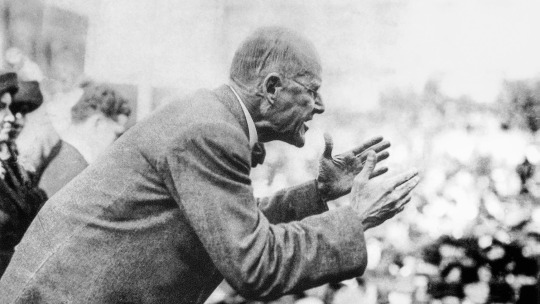
Eugene Debs
* * * *
Wars throughout history have been waged for conquest and plunder. In the Middle Ages when the feudal lords who inhabited the castles whose towers may still be seen along the Rhine concluded to enlarge their domains, to increase their power, their prestige and their wealth they declared war upon one another. But they themselves did not go to war any more than the modern feudal lords, the barons of Wall Street go to war. The feudal barons of the Middle Ages, the economic predecessors of the capitalists of our day, declared all wars. And their miserable serfs fought all the battles.
The poor, ignorant serfs had been taught to revere their masters; to believe that when their masters declared war upon one another, it was their patriotic duty to fall upon one another and to cut one another's throats for the profit and glory of the lords and barons who held them in contempt. And that is war in a nutshell. The master class has always declared the wars; the subject class has always fought the battles. The master class has had all to gain and nothing to lose, while the subject class has had nothing to gain and all to lose — especially their lives.
They have always taught and trained you to believe it to be your patriotic duty to go to war and to have yourselves slaughtered at their command. But in all the history of the world you, the people, have never had a voice in declaring war, and strange as it certainly appears, no war by any nation in any age has ever been declared by the people.
And here let me emphasize the fact — and it cannot be repeated too often — that the working class who fight all the battles, the working class who make the supreme sacrifices, the working class who freely shed their blood and furnish the corpses, have never yet had a voice in either declaring war or making peace. It is the ruling class that invariably does both. They alone declare war and they alone make peace.
Yours not to reason why;
Yours but to do and die.
That is their motto and we object on the part of the awakening workers of this nation.
If war is right let it be declared by the people. You who have your lives to lose, you certainly above all others have the right to decide the momentous issue of war or peace.
—Eugene V. Debs, The Canton, Ohio Anti-War Speech, published in The Call, June 16, 1918. Eugene Debs made his famous anti-war speech in Canton, Ohio, protesting World War I which was raging in Europe. For this speech he was arrested and convicted in federal court in Cleveland, Ohio under the war-time espionage law. He was his own attorney. His appeal to the jury and his statement to the court before sentencing are regarded as two of the great classic statements ever made in a court of law. He was sentenced to serve 10 years in prison.
42 notes
·
View notes
Text
So my dad loves to read, and he adores fantasy. Series he likes are The Lord of the Rings, The Wheel of Time, Mistborn, The Dresden Files, Throne of Glass… Things like that. I’m really unsure of what to get him.

1828. Robin Swift, orphaned by cholera in Canton, is brought to London by the mysterious Professor Lovell. There, he trains for years in Latin, Ancient Greek, and Chinese, all in preparation for the day he’ll enroll in Oxford University’s prestigious Royal Institute of Translation—also known as Babel. The tower and its students are the world's center for translation and, more importantly, magic. Silver-working—the art of manifesting the meaning lost in translation using enchanted silver bars—has made the British unparalleled in power, as the arcane craft serves the Empire's quest for colonization.
For Robin, Oxford is a utopia dedicated to the pursuit of knowledge. But knowledge obeys power, and as a Chinese boy raised in Britain, Robin realizes serving Babel means betraying his motherland. As his studies progress, Robin finds himself caught between Babel and the shadowy Hermes Society, an organization dedicated to stopping imperial expansion. When Britain pursues an unjust war with China over silver and opium, Robin must decide . . .
Can powerful institutions be changed from within, or does revolution always require violence?

To possess the Mandate of Heaven, the female monk Zhu will do anything
“I refuse to be nothing…”
In a famine-stricken village on a dusty yellow plain, two children are given two fates. A boy, greatness. A girl, nothingness…
In 1345, China lies under harsh Mongol rule. For the starving peasants of the Central Plains, greatness is something found only in stories. When the Zhu family’s eighth-born son, Zhu Chongba, is given a fate of greatness, everyone is mystified as to how it will come to pass. The fate of nothingness received by the family’s clever and capable second daughter, on the other hand, is only as expected.
When a bandit attack orphans the two children, though, it is Zhu Chongba who succumbs to despair and dies. Desperate to escape her own fated death, the girl uses her brother's identity to enter a monastery as a young male novice. There, propelled by her burning desire to survive, Zhu learns she is capable of doing whatever it takes, no matter how callous, to stay hidden from her fate.
After her sanctuary is destroyed for supporting the rebellion against Mongol rule, Zhu takes the chance to claim another future altogether: her brother's abandoned greatness.
7 notes
·
View notes
Photo

A Canton Dock with Distant Dwemer Towers - Vivec
12 notes
·
View notes
Photo



Rating: 5/5
Book Blurb: From award-winning author R. F. Kuang comes Babel, a thematic response to The Secret History and a tonal retort to Jonathan Strange & Mr. Norrell that grapples with student revolutions, colonial resistance, and the use of language and translation as the dominating tool of the British empire.
Traduttore, traditore: An act of translation is always an act of betrayal.1828. Robin Swift, orphaned by cholera in Canton, is brought to London by the mysterious Professor Lovell. There, he trains for years in Latin, Ancient Greek, and Chinese, all in preparation for the day he’ll enroll in Oxford University’s prestigious Royal Institute of Translation—also known as Babel.Babel is the world's center for translation and, more importantly, magic. Silver working—the art of manifesting the meaning lost in translation using enchanted silver bars—has made the British unparalleled in power, as its knowledge serves the Empire’s quest for colonization.For Robin, Oxford is a utopia dedicated to the pursuit of knowledge. But knowledge obeys power, and as a Chinese boy raised in Britain, Robin realizes serving Babel means betraying his motherland. As his studies progress, Robin finds himself caught between Babel and the shadowy Hermes Society, an organization dedicated to stopping imperial expansion. When Britain pursues an unjust war with China over silver and opium, Robin must decide…Can powerful institutions be changed from within, or does revolution always require violence?
Review:
Colonialism, revolution, relationship, and betrayal all come together in this beautiful and gripping story about an orphaned boy who is given the opportunity of a lifetime to go to Oxford and translate for the prestigious Royal Institute of Translation known as Babel.But the more time he spends there, the more he begins to uncover what is the true purpose of the tower and what he is meant to be doing the more he begins to realize that everything is a lie. Robin Swift is left an orphan when his mother dies of cholera in Canton but is brought to London by Professor Lovell... who looks mysteriously like him. Professor Lovell takes Robin as his ward and trains him in languages, he practically beats it into him, all for the purpose of getting Robin to be accepted into Babel. When Robin begins his schooling at Babel he is introduced to three other students in his cohort who are all meant to be working on translating languages as well as enchanting silver bars, bars that have made the British empire unparalleled in power as it helps serve the Empire’s quest for colonization. Oxford is a haven for Robin at first, he is given wealth, food, friendship, education... but when a mysterious boy that looks exactly like him runs into him Robin’s entire perception of Oxford and Babel comes crushing down as he is lured into the Hermes Society, a group bent on opposing the Crown and stealing from Babel to fight the colonization. Robin will be pulled back and forth between who he is, a Chinese boy raised in Britain, and who he truly is meant to be. Robin must decide who he will side with, the place that has given him everything or his homeland, his people. This is a deeply touching story about identity, heritage, and the power that words have. I felt myself so deeply immersed in this story, and the struggles that Robin faced and the injustices and treatment of the students who were different. This is a story about language, and how it impacts us, from the languages we have and are raised with and the languages we take in order to adapt and fit in. As someone who was raised to speak my own native language of Vietnamese but soon lost the use of it over time as I adapted to speaking English more, it was so revealing of that experience, of how we can lose ourselves trying to fit in and what it means to revel in your own culture and tongue. Seriously this book will be with me long after... I am still processing it and I can honestly say, yes please read this, it is a must read.
*Thanks Netgalley and Avon and Harper Voyager, Harper Voyager for sending me an arc in exchange for an honest review*
45 notes
·
View notes
Photo

Jiefang Bridge #guangzhou #解放桥 #广州 #bridge #traveladdict #discoverchina #instachina #chinatravel #tower #skyscraper #cantontowerguangzhou #canton #cantonese #guangzhoulife #streetphoto #streetphotography #light #squidgame #zonestreet #street2inspire #architecture #visitguangzhou (at Guangzhou, China) https://www.instagram.com/p/CduW1xsL5JD/?igshid=NGJjMDIxMWI=
#guangzhou#解放桥#广州#bridge#traveladdict#discoverchina#instachina#chinatravel#tower#skyscraper#cantontowerguangzhou#canton#cantonese#guangzhoulife#streetphoto#streetphotography#light#squidgame#zonestreet#street2inspire#architecture#visitguangzhou
0 notes
Text


THE DESCRIPTION OF SAINT FRANCIS XAVIER
The Patron of Foreign Missions
Feast Day: December 3
"Many, many people hereabouts are not becoming Christians for one reason only: there is nobody to make them Christians."
He was born Francisco de Jasso y Azpilicueta on April 7, 1506 at Javier, Kingdom of Navarre in northern Spain to an influential noble family. He was the youngest son of Don Juan de Jasso y Atondo, Lord of Idocín, president of the Royal Council of the Kingdom of Navarre, and seneschal of the Castle of Xavier and Doña María de Azpilcueta y Aznárez, sole heiress to the Castle of Xavier. Miguel de Jasso (later Miguel de Javier), his brother, became Lord of Xavier and Idocín at the death of his parents.
In 1512, Ferdinand, King of Aragon and regent of Castile, invaded Navarre, initiating a war that lasted over 18 years. Three years later, Francis's father died when Francis was only nine years old. In 1516, Francis's brothers participated in a failed Navarrese-French attempt to expel the Spanish invaders from the kingdom. The Spanish Governor, Cardinal Cisneros, confiscated the family lands, demolished the outer wall, the gates, and two towers of the family castle, and filled in the moat. In addition, the height of the keep was reduced by half.
In 1525, Francis went to study in Paris at the Collège Sainte-Barbe, University of Paris, where he spent the next eleven years. In the early days he acquired some reputation as an athlete and a high-jumper. Four years later, Francis shared lodgings with his friend Pierre Favre. A new student, Íñigo López de Oñaz y Loyola (later Ignatius of Loyola), came to room with them. At 38, Ignatius was much older than Pierre and Francis, who were both 23 at the time. Ignatius convinced Pierre to become a priest, but was unable to convince Francis, who had aspirations of worldly advancement. At first, Francis regarded the new lodger as a joke and was sarcastic about his efforts to convert students. When Pierre left their lodgings to visit his family and Ignatius was alone with Francis, he was able to slowly break down Francis's resistance. In 1530, Francis received the degree of Master of Arts, and afterwards taught Aristotelian philosophy at Beauvais College, University of Paris.
Francis began his study of theology in 1534 and was ordained on June 24, 1537. In 1539, after long discussions, Ignatius drew up a formula for a new religious order, the Society of Jesus. Ignatius's plan for the order was approved by Pope Paul III in 1540.
Francis was sent as a missionary to India. After a voyage of 13 months, he began preaching in the Portuguese colony of Goa (a state on the southwestern coast of India within the Konkan region), defending the natives from injustices and abuses. He was particularly outraged that some masters counted the blows inflicted on the slaves on the beads of their rosaries. Five months later, he preached with such enthusiasm among the Paravas on the Pearl Fishery Coast that most of them asked to be baptized. He also knew how to accept defeat, as when he preached for 12 months among the Brahmans obtaining only one conversion.
In Malacca in December 1547, Francis Xavier met a Japanese man named Anjirō (or Yajirō). had heard of Francis in 1545 and had travelled from Kagoshima to Malacca to meet him. Having been charged with murder, Anjirō had fled Japan. He told Francis extensively about his former life, and the customs and culture of his homeland. Anjirō became the first Japanese Christian and adopted the name 'Paulo de Santa Fé'. He later helped Xavier as a mediator and interpreter for the mission to Japan that now seemed much more possible. Francis returned to Goa to attend to his responsibilities as superior of the mission there in January 1548. The next 15 months were occupied with various journeys and administrative measures. He left Goa on April 15, 1549, stopped at Malacca, and visited Canton. He was accompanied by Anjiro, two other Japanese men, Father Cosme de Torrès and Brother Juan Fernández. He had taken with him presents for the 'King of Japan (the Emperor)' since he was intending to introduce himself as the Apostolic Nuncio.
With Anjirō and three other Jesuits, Xavier reached Japan on July 27, 1549, but he was not permitted to enter any port his ship arrived at until August 15th, when he went ashore at Kagoshima, the principal port of Satsuma Province on the island of Kyūshū. As a representative of the Portuguese king, he was received in a friendly manner. Takahisa Shimazu, the fifttenth head of the Shimazu clan, the son of Tadayoshi and daimyo (feudal lord) of Satsuma, gave a friendly reception to Francis on September 29, 1549, but in the following year he forbade the conversion of his subjects to Christianity under penalty of death; Christians in Kagoshima could not be given any catechism in the following years. Francis was the first Jesuit to go to Japan as a missionary.
He brought with him paintings of the Madonna and the Madonna and Child. These paintings were used to help teach the Japanese about Christianity. There was a huge language barrier as Japanese was unlike other languages the missionaries had previously encountered. For a long time, Francis struggled to learn the language. He was hosted by Anjirō's family until October 1550. He resided in Yamaguchi from October tom December 1550. Shortly before Christmas, he left for Kyoto but failed to meet with the Emperor. He returned to Yamaguchi in March 1551, where the daimyo of the province gave him permission to preach.
Having presented some gifts to them, a music box, a clock and a pair of spectacles. He was allowed to evangelize the people. It was Francis' opinion: 'That among all unbelievers, no finer people will be found than the Japanese.'
During his trip from Japan back to India, a tempest forced him to stop on an island near Guangzhou, Guangdong, China, where he met Diogo Pereira, a rich merchant and an old friend from Cochin. Pereira showed him a letter from Portuguese prisoners in Guangzhou, asking for a Portuguese ambassador to speak to the Chinese Emperor on their behalf. Later during the voyage, he stopped at Malacca on December 27, 1551, and was back in Goa by January 1552. He set sail with Diogo Pereira on the Santa Cruz for China. He planned to introduce himself as Apostolic Nuncio and Pereira as the ambassador of the King of Portugal. But then he realized that he had forgotten his testimonial letters as an Apostolic Nuncio. Back in Malacca, he was confronted by the captain Álvaro de Ataíde da Gama who now had total control over the harbour. The captain refused to recognize his title of Nuncio, asked Pereira to resign from his title of ambassador, named a new crew for the ship, and demanded the gifts for the Chinese Emperor be left in Malacca.
In late August 1552, the Santa Cruz reached the Chinese island of Shangchuan, 14 km away from the southern coast of mainland China, near Taishan, Guangdong, 200 km south-west of what later became Hong Kong. At this time, he was accompanied only by a Jesuit student, Álvaro Ferreira, a Chinese man called António, and a Malabar servant called Christopher. Around mid-November, he sent a letter saying that a man had agreed to take him to the mainland in exchange for a large sum of money. Having sent back Álvaro Ferreira, he remained alone with António. He died from a fever at Shangchuan, Taishan, China, on December 3, 1552, while he was waiting for a boat that would take him to mainland China. He was 46 years old when he died.
Beatified by Pope Paul V on October 25, 1619 and canonized a saint by Pope Gregory XV on March 12, 1622, his body is now in the Basilica of Bom Jesus in Goa, where it was placed in a glass container encased in a silver casket. This casket, constructed by Goan silversmiths between 1636 and 1637, was an exemplary blend of Italian and Indian aesthetic sensibilities.
In 1624, he was made co-patron of Navarre, and he is considered to be one of the greatest missionaries since St. Paul the Apostle. In 1927, Pope Pius XI published the decree 'Apostolicorum in Missionibus' naming Francis Xavier, along with Thérèse of Lisieux, co-patron of all foreign missions.
#random stuff#catholic#catholic saints#jesuits#society of jesus#francis xavier#francisco javier#foreign missions
2 notes
·
View notes

